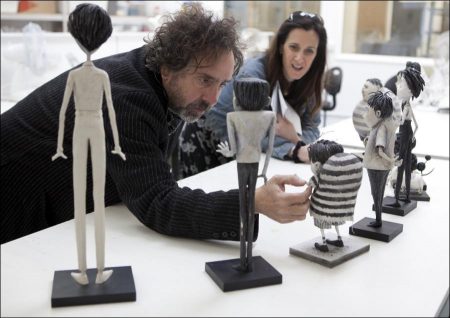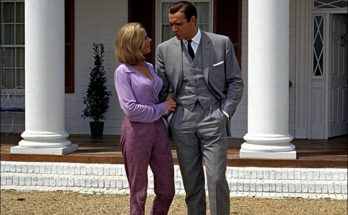Frankenweenie and stop-motion animation. Stop-motion animation is one of the oldest animation styles and is a very hands-on process. There are 24 frames per second in the stop motion for “Frankenweenie.” This means that the animator must stop and reposition the puppet 24 times to get one second of filmed action. On average, one animator can only produce 5 seconds of animation per week. Multiple puppets of the same character allowed animators to work on more than one scene at once.
Filming “Frankenweenie” in stop-motion animation took two years and employed the skills of a multitalented and diverse crew. “There are a lot of people that go into making a film like this,” director Tim Burton says. “The thing that makes it different than, say, a live-action film is that it happens in very slow-motion time. In live action you have to make quick decisions all the time; in stop motion it may take a couple of days or couple of weeks to do a shot depending on its complexity.”
Much research and preparation went into animating the two dogs-Sparky and Persephone. Animation director Trey Thomas and his team conducted research on how dogs move, which included going to the Windsor Dog Show to videotape dogs in action. Then they had a bull terrier come into the studio and act out parts of Sparky’s action and videotaped it from different angles. Poodles also visited and played out the role of Persephone. Thomas says, “We were trying to get as authentic a replication of dog action as we could. We were trying to make it as real as possible with this Tim Burton- aesthetically designed Sparky version of a dog.”
On the film there were about 33 animators, who, for the most part, worked alone over the two years it took to film “Frankenweenie.” The typical week for a stopmotion animator began with being assigned a shot. The animator was responsible for all the characters in that shot. Once he had reviewed the assignment, the animator did a run-through or block rehearsal with the animation director. That process helped to decide the camera movement, the lighting and where the placement of props would be.
The next day the animator had time to actually do a proper rehearsal, where he could get into the specifics of the acting and the timing. Tim Burton and animation director Trey Thomas were very specific about what they wanted as far as the conveyance of emotion or humor.
The animator also spent time tensioning the puppet. Tensioning a puppet involves tightening the screws in the limbs and the joints in order to find what works best for them. Some animators wanted absolute precision, so they would use a tighter setting, while others preferred a gentler touch and would be looking for looser tensioning.
An animator had to spend hours working with the puppet to get all of the movement that was required, whether the puppet had to sit or stand or drink tea, or whatever other action it had to do. On the day of the shooting, the animator knew exactly what he was going for and began the process of shooting the 24 frames per second.
As the animation director, Trey Thomas was very actively involved. Every day he was visiting each set and helping the animators when a challenge arose. “Each shot was like a puzzle piece of a larger picture, so it was just a frame-by-frame process of getting the puppets to emote and to act realistically and believably,” explains Thomas. “Tim [Burton] was going for a believable style and he wanted the laws of physics to be in play and for everything to feel very real. He wanted a very real film that was genuine and sincere, and so that was what our animators were going for.”
Voices were matched up to the movement by using planning tools called dope sheets, which have every frame broken out with the dialogue in it. So, for example, when the character said, “Please, sit down,” the animator noted that as soon as the character finished that line, he gestured to a chair and then the other character sat down. The dope sheets helped the animator to organize his thoughts, especially when there were multiple characters in a shot and each character’s action needed to be tracked-even if the character was just blinking.
Related Link: View the Full Production Notes for Frankenweenie
Visits: 86



